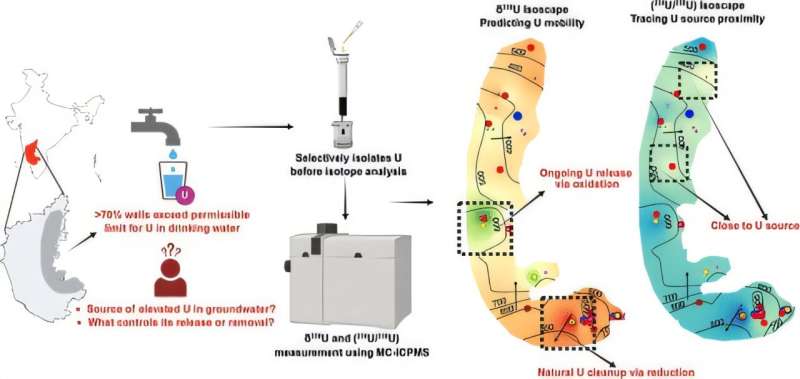Every so often, a breakthrough in science offers a beacon of hope to communities facing environmental challenges. A recent study shines a light on one such issue: uranium contamination in groundwater in Eastern Karnataka, India. Let’s dive into how this research not only uncovers the root cause of this problem but also opens doors to potential solutions!

According to a new study led by researchers from Columbia University Mailman School of Public Health, a significant 78% of groundwater samples tested in this region exceeded safe drinking limits for uranium. In some cases, the contamination was found to be 75 times higher than what is considered safe by the U.S. Environmental Protection Agency. This is alarming, especially considering how essential clean drinking water is for families. Uranium can negatively impact vital organs, which makes addressing this issue even more pressing.
The study reveals that uranium can become highly mobile under certain geological conditions. This knowledge empowers local communities to be more proactive in monitoring their water quality. For over 25 million people in Eastern Karnataka, groundwater serves as a primary source of drinking water, making these findings crucial for public health efforts.
Collaborating with experts from the Divecha Center for Climate Change and other esteemed institutions, the research team embarked on an extensive investigation to decipher the geological factors releasing uranium into the groundwater. They employed cutting-edge isotopic analysis, a method that helps trace the origin and movement of substances like uranium within aquifers formed in hard rock.
Interestingly, the researchers discovered that uranium contamination spikes in what they term “oxidizing environments.” In these areas, the underground conditions dissolve uranium into the water, allowing it to flow freely. On the flip side, “reducing zones” naturally trap uranium, preventing it from entering drinking supply. This nuanced understanding can lead to targeted strategies in the future, such as determining optimal locations for new wells and local treatment options for affected sources.
Lead author Arijeet Mitra, Ph.D., encapsulates the significance of their work succinctly: “We’re moving beyond simply detecting uranium to understanding its origin, movement, and long-term behavior. These insights can guide interventions to protect millions of people.”
The framework established by this study has broader implications, not only for Eastern Karnataka but also for other regions grappling with similar natural uranium contamination, including parts of the western and midwestern United States. Researchers highlight the urgent need for a robust, long-term monitoring system to track uranium levels and changing environmental conditions.
As senior author Anirban Basu, Ph.D., emphasizes, understanding how uranium travels in groundwater hinges on the oxygen levels present. In oxygen-rich environments, uranium remains dissolved and moves with the water. Yet without oxygen, it transforms into a solid form that does not dissolve, effectively settling out. The unique isotopic composition of uranium works like a tracking fingerprint, providing insights into its origins and pathways—vital information for developing effective monitoring solutions.
This illuminating study, titled “Isotopic Insights into Redox Processes Driving Uranium Distribution in Eastern Karnataka Groundwater,” underlines not just a scientific breakthrough but also a lifeline for communities in need.
More information:
Arijeet Mitra et al, Isotopic Insights into Redox Processes Driving Uranium Distribution in Eastern Karnataka Groundwater, Environmental Science & Technology (2025). DOI: 10.1021/acs.est.5c01913
If you would like to see similar science posts like this, click here & share this article with your friends!

